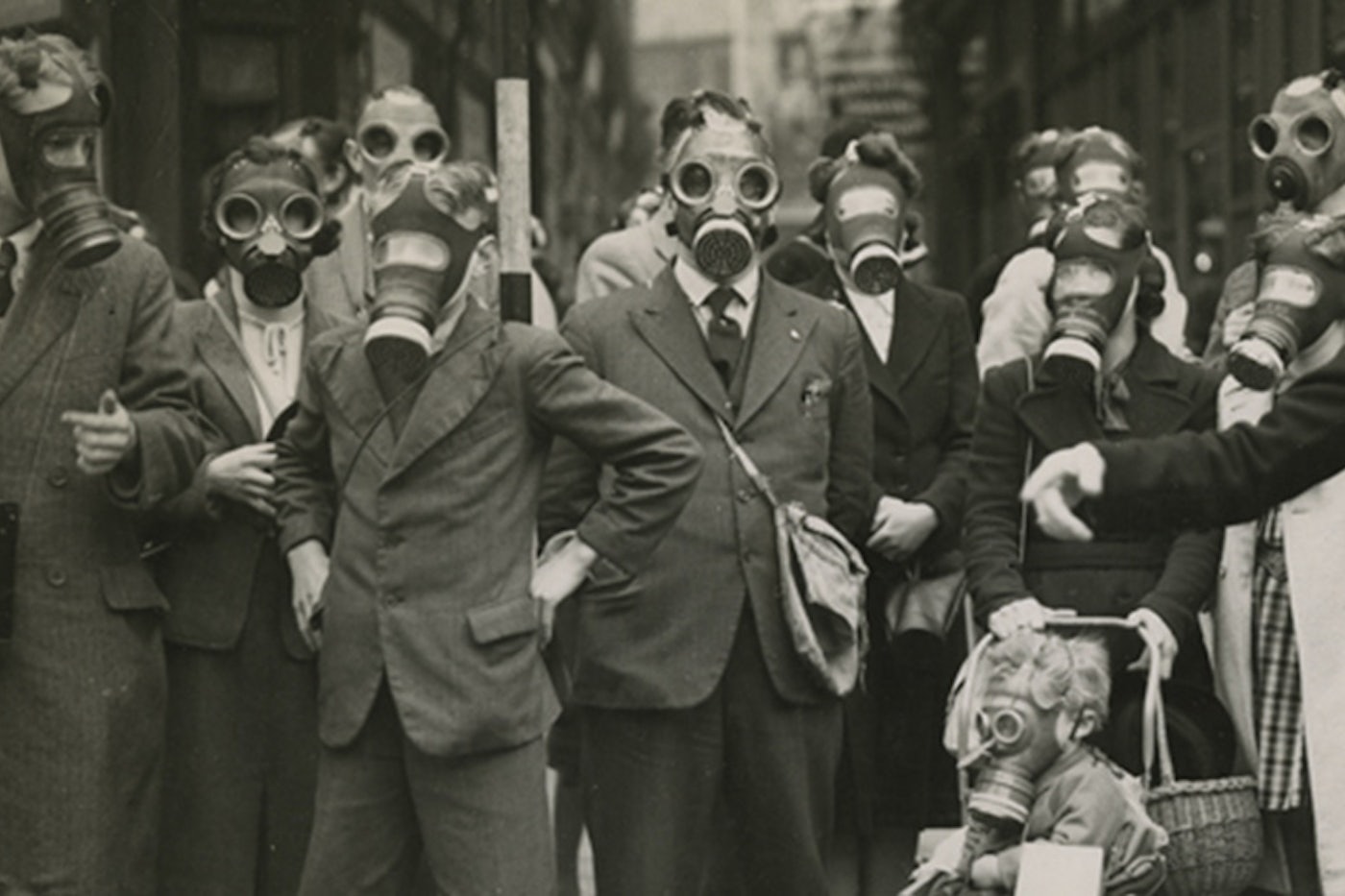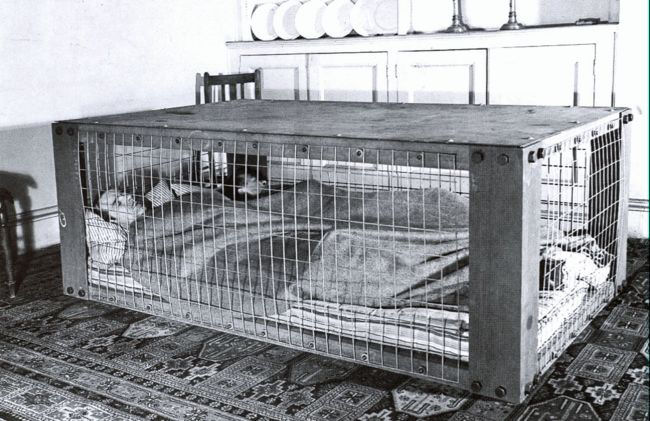The Blitz: How Britain Prepared
It was in the 1930s that Britain began to prepare for war. Long feared from the First World War, the government were aware that the next war they faced would be one that would focus on bombing raids, and even the feared attacks using gas. And so, they began to prepare in advance.
Gas masks were provided to the public should a gas attack take place. Having been issued in 1938, by February 1939 40 million had been handed out. A further 4 million would be distributed in the following 7 months. Gas masks varied on age. As an adult, it would be a plain black one as seen in the image below. For children, their's would have been red and blue, a micky mouse gas mask. Babies gas masks covered the whole baby and had to be continuously pumped by hand by the mother. Luckily, these masks would not need to be used as Britain never experienced a gas attack during the years of the war.
Perhaps the most important percaution that was taken before the war broke out was the implementation of air raid shelters. These were essential in order to keep the population safe and to help save lives in the event of an aerial attack. There were two different shelters that were introduced for the home; these were the Anderson shelter and the Morrison shelter.
The Anderson shelter was named after Sir John Anderson, who was in charge of air raid precautions in 1938, the same year these shelters were designed. Built into a persons garden, they were made from steel or iron and formed a semi-circle shape. Once dug into the garden, the shelter would be topped with earth that would have remained from having dug the shelter into the ground. Low income families (those who recieved less than £250 a year) would recieve these shelters for free, whilst those families that were more well off and could afford to would purchase their own for £7. Although being outside, they were comparatively small, and having to accomodate up to six people, it did not allow for much free space. Living conditions were not the best in these shelters and damp became a great issue. However, they were effective and provided good protection. A release panel was also added to the back to provide a quick, swift exit should it be needed.
The Morrison shelter, named after Herbert Morrison, was the Home Secretary. This shelter differed from the Anderson shelter as instead of being outside in the garden, this one would have been assembled inside the house. Essentially a table, it came in a self assembly form and would require the individual to assemble it themselves. It was a cage like contraption that was made out of heavy steel and would provide protection from inside the house. Unlike the Anderson shelter which appeared in 1938, this shelter did not make an appearance until 1941. It would have been ideal for those who did not have a garden of their own. Designed to hold a whole family, these shelters were also very uncomfortable. Thus resulting in some opting to stay in bed instead.
If these options did not work for people, public shelters were also made accessible. These were in many different places such as in cellars, basements of schools, factories, department store basements, in railyway stations, and in street trenches. In doing this, it provided many different safety options for as many people as possible. Having shelters in factories did not always prove to be a good idea. A very popular example of this is Wilkinson's Lemonade Factory in North Shields. Although warm, dry, and having the ability to accomodate large amounts of people, it was not the safest place to create a shelter. On 3 May 1941, four bombs were dropped and a direct hit landed on the factory. 102 people were killed during this raid. The issue with creating the shelter underneath the factory was that no real protection was provided should a direct hit be landed. The mass amounts of heavy machinery that had been left and had not been removed, meaning that when the bomb hit, this would fall upon the people seeking shelter beneath; this is what caused many of the deaths. Only 92 people survived this catastophic event.
Moving on from shelters, black outs were implemented within the country. Having been imposed on 1 September 1939, windows and doors were to be covered completely at night, so that no light was to get out and could prove to be of use to the enemy. This was to be done through the use of heavy, dark curtains, or cardboard and dark paint. Cars would also be required to drive with no headlights on so that the enemy aircraft would not be attracted, and thus aided. This, albeit, proved to be a dangerous act; thousands of people would lose their lives as a result of this. In an attempt to prevent this, white strips would have been painted on the road to act as some sort of guide. Driving was not the only cause of for injuries and deaths during the blackout. As expected, it was difficult for people to find their way around in the pitch black, especially outside where there would have been many safety hazards. People would inevitably end up falling down steps, tripping up, walking into canals, falling due to the kerbs, and ending up victim to many other dangerous, outside hazards.
One of the most important ways in which Britain prepared for the war was the introduction of the Air Raid Siren. Once this sounded, civillians would be aware that a German Luftwaffe was on route to drop bombs over their city. People would rush to their shelters to protect themselves, whether this was through the aforementioned Anderson and Morrison shelter, or to a local public shelter, such as in the underground. For most working in essential work, such as in factories, they would often have to ignore the first siren and continue to work due to the load they needed to produce in order to help the war effort. These workers would only shelter when a second siren was sounded. For those who would shelter straight away, they would remain there until the All Clear siren sounded and they knew that they were safe to come out. Air Raid Sirens sounded both during the day and night, so people had to be prepared to get to safety quickly. And sometimes, the sirens did not sound at all when a raid occured. Below is a clip of what a siren would have sounded like when a raid was imminent.
To aid Air Raid Sirens, Barrage Balloons were also issued to prevent enemy aircraft and act as an aerial defense. These were not a new introduction, however, as they had been used in the First World War too. They would be placed at areas that would have been targetted by the enemy; these would have been places such as ports, harbours, or industrial cities. Cables that hung from these balloons were lethal to the aircraft of the enemy. Aiming to trap them, this meant the aircraft would be prevented from dive-bombing and would keep it at a height that would allow for anti-aircraft guns to reach them. These balloons would be a common site for those living in industrial cities, and whilst they would provide some sort of protection against the enemy aircraft, they also caused damage upon their home cities. Susceptible to breaking free from their stationed position, bad weather meant they had little chance of staying put. As a result, damage was mainly inflicted upon rooftops of buildings where the balloons would either land, or were their heavy cables would have been dragged along the top causing mass damage.
Sand bags were also used during the war. In regards to the regular person, the council would issue a full one to most houses. Statues would be covered with sandbags too, this would protect them from the bomb blast. Monuments, public shelters, and other buildings would also recieve the same protection, whether it be general homes, shops, or hospitals. Seeing buildings covered in sandbags is a common sight during the Second World War.
It was imperative for the British government to provide as much protection as they could to keep civillians, and important areas, safe from any aerial attacks that was inevitable. Alongside these physical measures that were introduced, groups were also developed, such as the Home Guard, ARP (Air Raid Precaution) Wardens, and others that would help the likes of civillians in the event of an air raid. Keeping the country safe, morale high, and lives kept was imperative during the devastating months of The Blitz, and the years of bombing attacks. After all, the war in the air was to be the future of warfare.







Comments
Post a Comment